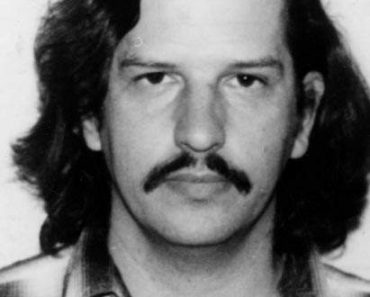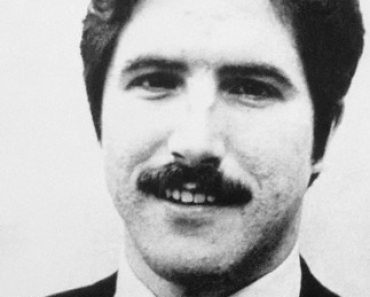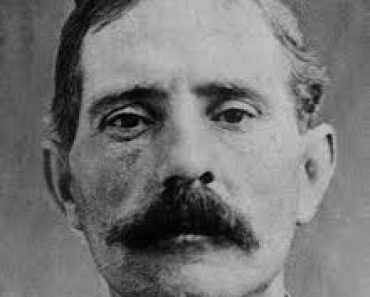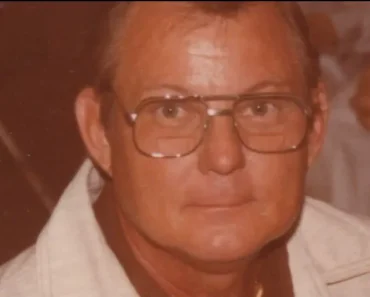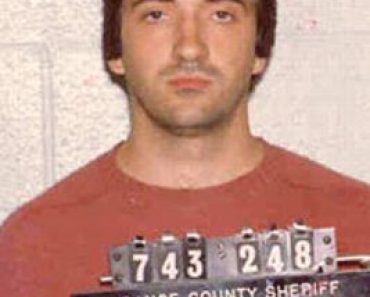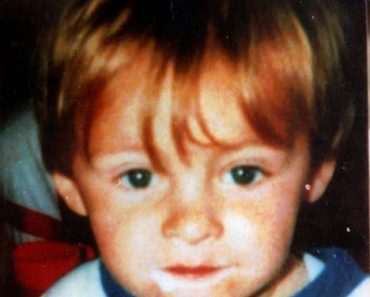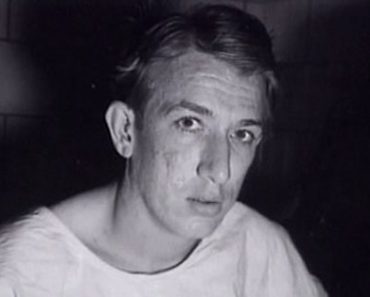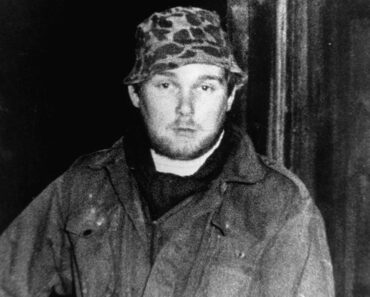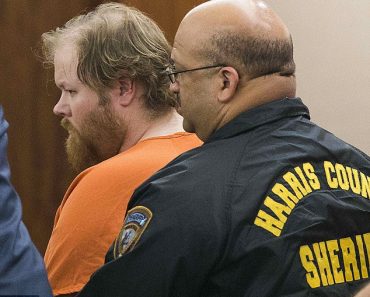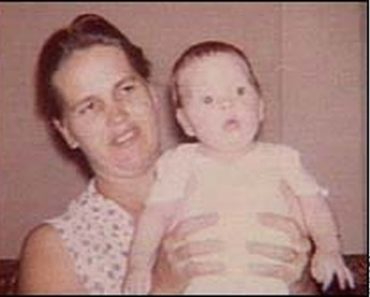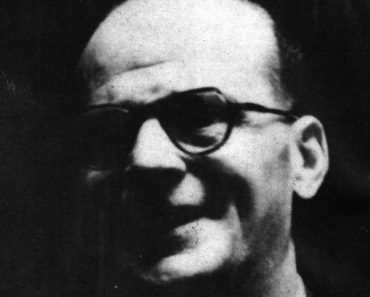Hadden Irving Clark | American Serial Killer

Hadden Irving Clark
Born: 07- 31 – 1952
Cross-Dressing Cannibal
An American Serial Killer
Crime Spree: 1986 – 1992
Incarcerated in Maryland
Hadden Irving Clark is an American murderer and suspected serial killer. He is currently serving two 30 year sentences at the Eastern Correctional Institution in Westover, Maryland for the murders of 6 year old Michelle Dorr, in 1986 and 23 year old Laura Houghteling, in 1992.
May 31, 1986
Hadden Clark, 35, stood outside of his brother Geoffrey’s empty home, sweating in the 92-degree heat. The wiry, six-feet-two tall man leaned against his battered Datsun pickup truck staring at the house before him, feeling sorry for himself and getting angrier by the minute as the temperature soared higher. Today the house was eerily quiet. Everyone who lived there was gone for the day. Geoffrey Clark, the only brother Hadden had left, who wasn’t in prison, had deserted him.
Hadden had most recently been ordered to vacate the room he rented at Geoff’s house because he had masturbated in front of his young children. There were nephews and a niece. A few months before that, Hadden had been arrested for shoplifting women’s underwear at a local department store. Hadden hadn’t stolen the bra and panties to give to a girlfriend. He stole them to wear himself. He liked his “ladies clothing.”
Less than a year before this, Hadden had been medically discharged from the Navy, diagnosed as a paranoid schizophrenic.
Then, just a week ago, his six-year-old niece, Eliza, had called him a retard. He wanted to kill her for that remark. And he meant that literally.
So, here Hadden Clark now stood, seething in the hot sun, about to go into his brother’s residence on Sudley Road in Silver Spring, Maryland to pick up the last box of his belongings that yet remained. As he began to move towards the house, a little girl walked up to him.
The six year old, with freckles all over the bridge of her nose, was Eliza’s weekend playmate. The little girl was the daughter of a divorced man down the street who had custody of her on weekends. Her name was Michelle Dorr. She was wearing a pink, ruffled swimsuit, that was still wet from playing in a plastic backyard pool and she was looking for Eliza.
Michelle Dorr – Find A Grave
The Murder of Michelle Dorr
As Hadden stared down at the youngster before him, he suddenly knew exactly how to get back at his niece for calling him a retard.
“She’s in the house. Upstairs in her room playing with dolls,” Hadden would lie to the little girl. “You can go inside if you like.”
Hadden watched Michelle wander into the house and heard her steps as she walked up the stairs of his brother’s silent home. When she was out of sight, he walked around to the back of his truck and pulled a toolbox towards him. Hadden made his living as a chef and so inside the metal box was every kind of knife a commercial restaurant would ever need, each honed to its maximum degree of sharpness. Hadden selected a 12-inch long chef’s knife and casually strolled toward the house.
Carl Dorr
Life hadn’t treated Michelle’s father, Carl Dorr, well. His two college degrees, one in economics, the other in psychology, hadn’t done much for him and by the mid-1980s he had settled into a series of jobs where he spray painted cars on commission. His personal life was worse. He had married Michelle’s mother, Dorothy, in 1978, but after their daughter was born, the marriage not only fell apart but evolved into a brutal battle. There were times when Carl would slap his wife around in front of Michelle with the emotional toll falling on the child. The stress made the little girl stutter and grind her teeth at night. The two parted ways.
On Valentine’s Day in 1976, Carl Dorr had shown up at his estranged wife’s house and refused to leave. He told her if there was a divorce hearing he would lie under oath, say she was an adulteress, an unfit mother and if he lost the custody battle, he would kidnap Michelle at the school bus stop. Then, according to Dorothy, he threw her against the wall and beat her.
Joint custody was finally agreed upon and Carl looked forward to weekends with his daughter. And this particular weekend was no different. Carl collected Michelle from her mother’s home and they shared dinner at McDonald’s. Carl then bought her a toy at the 7-11, rented her a kid’s movie from a video store, and on that hot Saturday afternoon, filled a plastic swimming pool at noon, promising to take her to a big neighborhood pool at four that same afternoon. She showed off for him for a few minutes and then Carl went into the house to watch the Indianapolis 500 auto race.
Revenge
Carl Dorr’s rented house was just two doors down from Geoffrey Clark’s home. And, while Carl watched the race, he failed to check on his little girl outside. She soon grew bored playing alone and wandered down the street looking for Eliza Clark. Minutes later, Hadden Clark was tip-toeing up the stairs of the empty house after her, a knife in his hand that appeared to be as big as his intended victim. He followed her into Eliza’s room.
Hadden threw the little girl to the floor and was on her so fast she didn’t get a chance to scream. The first slash was a backhand, from left to right across her chest. The second went back the other way, almost like Zorro making the Z sign. She fell back in shock and he straddled her, putting his free hand over her mouth. She surprised him by biting his hand. That made him very angry and he plunged the twelve-inch knife straight through her throat.
Blood was spurting all over the wooden floor of the small bedroom. The room in the old house sloped and the blood sought the lowest level.
Hadden didn’t know what to do first. Should he mop up the blood and cover up what he had done or try to have sex with the dead girl. He opted for sex, but that failed him. He couldn’t pull it off.
Hadden then raced downstairs to the kitchen and got some plastic trash bags. He ran out to his truck and got some rags and an old Navy duffel bag. He was back upstairs in seconds. Hadden stuffed Michelle into a plastic bag and then inside the duffel bag. He fell to his knees, mopping up the blood as if he was swabbing the deck on one of the aircraft carriers he had served on. Everything that had blood on it was stuffed into the trash sacks
His clean up looked pretty good to his eyes. Nothing seemed out of place. Nobody would know what had just happened. Hadden threw the body and the bags into the back of his truck. He had to be at his chef’s job at the nearby Chevy Chase Country Club in 20 minutes. He couldn’t be late. Being late would be noticed.
Little Girl Gone
Carl Dorr looked into the back yard several times. He didn’t see Michelle. The pool water was calm. Still, he wasn’t worried. Sudley Road in Silver Spring, Maryland was a safe suburban street, three miles from the Washington, D.C. border. Nothing exciting had ever happened there. He had no doubt that his daughter was down the street playing with her pal, Eliza Clark. He paid a few bills and finished watching the race.
Around 5:30 Carl wandered over to the Clark’s house. Geoffrey Clark had returned home and was in the back barbecuing. His children from his first marriage were there, as was his new girlfriend. Eliza was part of the group. But Michelle was not there.
Geoff Clark said he hadn’t seen Michelle all day. Eliza agreed. She hadn’t seen Michelle either. Perplexed, Carl walked to the end of the street but saw nothing. The bewildered father then began knocking on doors. No one had seen his daughter. Now, panic did begin to set in. He drove through the neighborhood one final time and then pointed his car in the direction of the nearest police precinct. There, he reported his young daughter missing.
The moment he did so, he became the prime suspect.
Hadden Irving Clark
Hadden Clark finished his shift at the country club and began driving, the body of the six-year old girl in the back of his pickup truck, covered by a metal cap. He stopped off first at nearby Bethesda Naval Hospital to a cut on his hand dressed. The free medical privileges were part of his benefits package he received when he was discharged from the Navy. When he left the hospital, it was nearly midnight.
Hadden drove towards Baltimore on old Columbia Pike. When he saw some woods he pulled over to the shoulder of the road and stopped. He grabbed the duffel bag, a flashlight and a shovel from the back of the truck. He stepped over a guard rail and stumbled down a ravine and into the woods. At the base of a tree he dug a grave four feet long, digging until he hit clay. He took the little girl from the duffel bag and began dropping her in. But there was one more piece of business. He had to taste her. The flesh was his prize, her death his revenge. Afterwards, he covered her body with parts of an old mattress he found nearby, and some leaves. He climbed back up the incline and into his truck, driving back to his newly rented room, five miles from his brother’s house.
Prime Suspect
Every rookie cop is told that when a child disappears he is to look first in the direction of the parents or caregiver. Statistics bear this out. It’s usually a 90% chance that either the parents or the caregiver know what happened to the child.
“It’s page one in the handbook,” said Detective Mike Garvey, the first cop to speak with Carl Dorr. And the more they looked at Carl Dorr, the more he looked like their man. After all, hadn’t he threatened his wife, saying he would abduct their daughter just three months before? Hadn’t he and Dorothy been battling over the kid for years? Wasn’t Carl the last to see her alive? They went right at him, asking him to take a polygraph the very next day. When the polygraph examiner, a local fire marshal, told them that Carl might know more about Michelle’s whereabouts than he was telling them, the cops thought they had their man.
“It was good cop, bad cop,” Carl later said. “They were right in my face, telling me I had failed the polygraph exam and that it had been 24 hours and they knew she was dead. ‘We’re going to find her,’ they said, ‘When we do, we’re coming to get you.’”
His estranged wife told the cops she thought he had done it too. She gave them an extra motive. Her estranged husband was trying to get out of paying her $400 a month in child support. Carl Dorr was caught inside a nightmare. When he told the police that he loved his daughter, they didn’t believe him. He took a second lie detector test and passed easily. In an attempt to prove his innocence, he underwent hypnosis and took sodium pentothal, the so-called truth serum. None of this convinced the cops. But then Carl may have been his own worst enemy. He snapped, and in a psychotic episode told a psychiatrist that he had abducted and killed his daughter.
“I started hallucinating,” he recalled. “I couldn’t take the pressure. My brain was soup.”
In his altered mental state he began to believe that people on television shows were talking about him. He looked behind the set and when he didn’t see anything, he thought the police were altering his reception.
The next day Carl got into his car and drove to his father’s grave. He began talking to his father’s headstone. He thought the headstone was speaking back. His mind was so gone that he began to believe he was God’s only son.
“I believed that if I could find Michelle I could bring her back to life. And if I was able to do that, then I must be Jesus,” he said. He began calling himself the White Messiah.
The cops took all this to be a form of confession. They had Michelle’s father in for questioning again and again. It wasn’t long before Carl Dorr was committed to a hospital for 72 hours of psychiatric observation. As soon as he got out, he was hauled in for questioning again.
In truth, Carl did have something to hide. Ashamed that he had neglected his daughter that afternoon, he fudged the timeline. The last time he had seen Michelle was around noon of May 31st. But he told the cops it was around 2:10 p.m. The time discrepancy was about to give Hadden Clark a perfect alibi.
Neighborhood Weirdo
Detective Wayne Farrell would later recall cruising Sudbury Road on the day after Michelle Dorr vanished. He was grasping for any straw and came upon Hadden Clark in the driveway of his brother’s house, tinkering with his truck’s engine.
The detective approached Hadden and asked him if he had been at this residence the day before. Had told him “only for a minute or two.”
Detective Farrell told his partner, Mike Garvey, about the encounter. He said he had checked around and found out that Hadden Clark seemed to be the neighborhood weirdo. Garvey said to bring him in. Farrell called Geoff Clark and Geoff called Hadden and told him to be at the police precinct the next morning. He was on time but Garvey let him cool his heels for 10 minutes before going to work on him.
Hadden appeared to have an airtight story. He said he had punched his time clock at the country club where he worked at 2: 46 that afternoon. Garvey and Farrell did some figuring. If Carl Dorr said he had seen his daughter at 2:10 then Hadden Clark couldn’t have found, abducted or killed someone and then hid a body within 36 minutes. That was nearly impossible. Still they weren’t about to let him walk out without being questioned. They went soft on him at first, asking him about the rabbits he had raised behind his brother’s house and his life before moving in with his brother. They gradually began asking him about the children in the neighborhood and Hadden opened up, complaining that one of the little boys had once kicked him in the testicles while he played with a group. He also confessed he had once playfully pinned a little girl to the ground. Garvey jumped on that admission.
“Is that what you did with Michelle?” He pulled out a photo of the little girl and when he did Hadden began rocking back and forth in his chair. Tears appeared in his eyes and he wouldn’t look at the photo.
“Is that what you did with Michelle?” Garvey asked again. Hadden mumbled an answer and then did something the cops weren’t prepared for.
“I feel sick. Do you have a bathroom?” he asked. He went into the police station bathroom and began vomiting loudly into the toilet. The cops were right behind him.
“What did you do?” Garvey shouted into the stall. Garvey slid the photo of Michele Dorr under the stall door.
They were inches away from an arrest. They just needed him to say it. But Hadden seemed to get a second wind. He said he had worked that day and mentioned the 2:46 punch-in again. Garvey checked his notes again. Crazy or not, it did appear that Hadden was better than ten miles away at work in the timeframe they were working with. Carl Dorr had given his daughter’s killer the perfect alibi while at the same time, directing the suspicion to himself because of his behavior and lack of speaking the truth.
It would be another 14 years until the mystery of Michelle Dorr’s death would be solved and her body would be recovered.
Article Continues Below
WickedWe Recommends:
Born Evil
Born Evil is the terrifying true story of American Serial Killer Hadden Irving Clark.
40 year old Hadden Clark was homeless and living in his truck in Bethesda, Maryland. He slept with a teddy bear, dressed as a woman and carried a straight razor, a gun and 28 carving knives wherever he wondered.
When he was finally arrested in 1992 for the stabbing murders of two local girls, no one was overly surprised. However, after his incarceration, he began a confession that would shock everyone.
A must read tale of split personalities, cannibalism and serial murder told only as author Adrian Havill can do.
Hadden Clark
Most serial killers come from the bottom half of society. They grow up in poverty, and have few opportunities. Parents or caregivers often abuse them. While Hadden Clark was abused, he was given many advantages, the result of being the progeny of a distinguished family.
His mother, Flavia, boasted of being able to trace her lineage back to the voyage of the Mayflower and had direct descendants who were heroes in the Revolutionary War. Hadden’s grandfather on his father’s side served as the elected Republican mayor of White Plains, New York. His father, Hadden Sr., would help invent clear clinging plastic wrap and fire-retardant carpeting. The Clark family was well off and well thought of by their neighbors. Despite all this, the family had a deep secret. Both parents were alcoholics whose drinking often led to physical battles.
Hadden, born in April of 1951, was the second child. His eldest brother, Bradfield, had been born a year earlier. Geoffrey Clark, the youngest brother, arrived in 1955. The last child, Alison, was born in 1959. She would eventually run away from home breaking all ties with her parents.
The Clark family bounced around Connecticut and New Jersey as Hadden was growing up, rarely staying in any place for more than a year. Hadden’s father, who had both an MBA and a PhD in chemistry, never seemed satisfied with his employers, always searching for more money.
Bradfield Clark
Bradfield Clark was a handful from the start and became involved with drugs as a teen. Though he would receive two university degrees, and be highly thought of in the new world of computers, the Clark genes would be his downfall. In 1984, during a night of drinking and drugs, he would murder his date, a beautiful 29-year old woman named Patricia Mak.
After banging her head against a brick cinderblock and strangling her, he would cut up her body into 11 pieces in his bathtub, cook part of her breasts on his barbecue grill, eat them and then stuff the remaining body parts into plastic bags. Like Hadden, he intended to bury the body, but grew remorseful, attempted suicide and then called the police. He received 15-years-to-life and is still serving time at Pleasant Valley State Prison in California.
Geoff, the youngest brother, would have other problems. After earning a degree in microbiology at Ohio State University, he married a childhood sweetheart and the two made their way to the Maryland suburbs of Washington where a position at the Food and Drug Administration awaited. They settled into a quiet house on Sudbury Road in Silver Spring and had three children before the marriage turned ugly and divorce actions were filed. Marcia accused Geoff of physically abusing her twice and he was convicted of one of the charges, earning a suspended sentence.
If the three other Clark children had difficulties in their lives, with Bradfield eventually committing the ultimate offense, they paled alongside Hadden. He seemed to have been born evil and liked to hurt people. Children usually ran the other way when he showed up and those who dared cross him often found their family dog or cat deposited on their doorstep, decapitated.
Kristen
Hadden’s mother, Flavia Clark, at first blamed her middle son’s strange behavior on a bad forceps delivery. Then she thought he had cerebral palsy and took him to an expensive clinic. His father however had no such illusions. After a few drinks, he began to refer to his son as “the retard.” Since Hadden was the second child, and the couple had wanted a girl, his mother often dressed him in frilly girl’s clothing. A taste for female clothing was implanted in him as was the name Kristen, the name his mother addressed him by when she was drunk. Which was basically every day.
Hadden did not however test as mentally deficient. In fact, he could appear to be a genius when it came to chess, a game that required thinking and concentration. On the other hand, emotionally he was a small child who lashed out physically when he was publicly criticized. The only place where he felt a degree of normalcy was at his grandparents’ retirement estate. After his term as mayor of White Plains, his grandfather had purchased a dream house at the edge of a town called Wellfleet on Cape Cod. Nobody called him a retard there and it became as close to heaven on earth as Hadden Clark would ever find.
The Chef
Flavia Clark wanted her son to have a trade and so she enrolled him at the prestigious Culinary Institute of America, a two-year chef’s school in Hyde Park, New York. There, he surprised everyone by demonstrating a real talent for carving ice sculptures and figures from tallow. His chef’s education was not without incidents though. Hadden retaliated against slights by urinating into vats of mashed potatoes. Still, he passed enough courses to graduate from the cooking academy in January of 1974. In a rare display of solidarity, Hadden’s entire family showed up for the graduation ceremony.
The degree from a top-flight chef’s school enabled Hadden Clark to pick and choose employers. But he was never able to keep a job for more than a few months. His strange behavior, like openly chugging beef blood in a restaurant’s kitchen, did not endear him to fellow employees or employers. His first jobs were in Provincetown on Cape Cod, where years later he would confess to killing several women in the sand dunes nearby. On one such occasion, he claimed to have murdered a young woman burying her nude under a sand dune after first removing her hands at the wrists. Hadden told police he used her fingers as experimental bait for surf fishing, a hobby he had become proficient in while living on the Cape.
After becoming shunned by restaurant owners in the beach towns of Massachusetts, Hadden Clark did a one-year stint on the cruise ship S/S Norway. After that, there were jobs in Long Island banquet halls, and a three-week assignment at the 1980 Olympics in Lake Placid, New York. In all, Hadden Clark would hold 14 different jobs between 1974 and 1982.
The Navy
During that time his family disintegrated further. His grandfather died and his grandmother, in poor health, entered a nursing home. His parents divorced, with his father dying soon after from cancer. Hadden next entered the U.S. Navy as a below deck cook. It was his last chance at a career. But his shipmates didn’t understand a sailor who often wore frilly ladies’ panties under his uniform. There were beatings. Once, he was locked in a meat freezer for three hours. The Navy tried moving him to new ships but there were just more incidents.
After a final beating, where he suffered a concussion from his head being banged against an aircraft carrier’s deck, Hadden Clark was given a medical discharge, diagnosed as a paranoid schizophrenic. He soon showed up on his brother Geoff’s doorstep, which resulted in the brutal killing of little six-year old Michele Dorr, with the police believing that her father and not Hadden Clark was their prime suspect.
The Money
Hadden Clark’s mental state deteriorated over the next five years although his appearance and his behavior weren’t bad enough to get him committed to an institution. He eschewed rented rooms and began living under the cap of his pickup truck, often setting up camp in woods just off an interstate highway. His days as a chef were over. Nobody would hire him. He worked odd jobs as a minimum wage gardener sent out by homeless groups and at night he would toil at fast food shops. Hadden had plenty of money. Living alone in the woods cost nothing. By 1990 he had saved nearly $40,000.
Probation
During those years there were plenty of warnings, but the legal system stayed focused on Carl Dorr instead of Hadden Clark.
In September of 1988, Hadden visited his mother, who was now living in Rhode Island. During his stay he began stealing items from her house. When Flavia finally caught him and screamed at him in anger, he lost his mind. Hadden lashed out, knocking his mother down and kicking her. Then he jumped into his truck and tried to run her over. She jumped aside just in time. The next day she charged her son with assault and battery. Hadden got a year’s probation.
Flavia, devastated by Brad’s murder conviction and Hadden’s assault, wanted nothing more to do with her children. She wrote a letter to Hadden saying she was going to pretend he was dead until he got some help from a veterans’ hospital. “Always remember that your mother and father loved you,” she wrote. The word “loved,” written in the past tense, did not go unnoticed.
1988
In 1988, Hadden Clark was stopped for speeding. Underneath the driver’s seat was a .38 caliber Astra handgun. The same police department that had focused on Carl Dorr and not the real murderer let him go after he pled guilty to a destruction of property charge that had occurred earlier in the year. He was able to walk away with another suspended sentence and probation. This slap on the wrist that now extended into two states.
The destruction of property charge was particularly egregious and showed his temper was far from under control. In his last rental before going to live inside his truck in the woods, Hadden was bounced from a house in Bethesda, Maryland because as his landlord said, “he seemed crazy and evil.” But before he left, he literally booby-trapped the house.
Hadden began by balancing a 10-gallon can of oil on top of a door so that it would spill when the door was pushed open. After spraying black dye on the living room carpet, he hid rotting fish heads inside the family’s piano, chimney, and stove. As a final act of revenge, he killed both the family cats, placing one dead feline on the front door welcome mat and the other inside the refrigerator. Lastly he stole several inconsequential items.
“The smell of decaying fish permeated the house and was extremely difficult to eradicate,” the charging document read. Yet, the combination of a gun possession charge and vandalism set off no alarm bells about the man the local cops had once, albeit briefly, suspected of killing a six-year old girl.
Getting Help
There were times that Hadden Clark did attempt to get himself help. He would often show up at a local veterans’ hospital but, after staying a few days and getting a few doses of Haldol, the anti-psychotic drug, he would bolt from the ward and return to the woods.
A doctor’s diagnosis was a actually warning: “his mental state is psychosis with questionable etiology. He states that birds and squirrels talk to him and keep him company. He is tearful at times with intermittent outbursts of anger and agitation. He is a potential danger to himself through poor judgment and self-defeating behavior.”
Hadden’s own words, as recorded by the hospital’s doctors, were chilling. “I think I have a split personality,” he once said. “I don’t like to hurt people but I do things I am not aware of . . .”
1989
In February of 1989, local police again arrested Hadden Clark. This time there was a 17-count criminal indictment. Fifteen of the counts were for theft. The acts were unusual. Hadden Clark had dressed in women’s clothing and visited a number of area churches. While women inside the churches attended choir practice, he visited the cloakroom and stole their purses and their coats.
On the day he was arrested, he pulled over to the shoulder of a park road and tinkered with his car. When the police offered assistance, Hadden panicked. He began fumbling around in the front seat, attempting to hide some of the women’s coats and purses. But it was too late. The police had seen what he was trying to do and they had also spied a black gun holster hanging at the top of a seatbelt restraint. They wanted to see what else he had. When they saw all the women’s purses and coats they asked if he owned them. Hadden Clark said he did.
“They’re yours? The incredulous cop asked.
“Yes,” Hadden Clark answered. “I’m a woman.”
The cops searched further. There were women’s wigs, a hypodermic syringe, women’s dresses, and a thick roll of cash.
Arrested, he finally served some jail time. He stayed inside for 45 days before he posted bail but later boasted that he did the jail time on purpose because it was more comfortable in the county detention center than outside in the freezing February cold. He began to like the three meals a day, a roof over his head and movies every Thursday. He was almost reluctant to leave when spring arrived.
Although some of the charges were dropped in exchange for a guilty plea on two counts, the sentencing guidelines still called for three months to two years. Again there was probation even though he was already on probation in Maryland and Rhode Island.
Get Out of Jail Free Card
“The defendant has serious mental problems and is now addressing them,” Rockville, Maryland Judge Irma S. Raker wrote in her sentencing opinion. His public defender, Donald Salzman, was so sympathetic, he wrote a letter for Hadden Clark and instructed him to hand it to any police officer the next time he was arrested. The note read:
TO ANY POLICE OFFICER:
I want the help of my lawyer, Donald P. Salzman
and I want my lawyer to be present before I answer any questions about my case or any other matters.I do not wish to speak to anyone concerning any
criminal charges pending against me or anyone else, or
any criminal investigation regardless of whether I am
charged.I do not want to be in any lineup, or give any
handwriting samples, or give any blood, hair, urine,
or any other samples unless my lawyer is present.My lawyer’s address and phone number are:
Donald P. Salzman
Assistant Public Defender
Office of the Public Defender
27 Courthouse Square
Rockville, Maryland 20850
(301) 279-1372}
Below the letter was a place for a police officer to sign and next to that a phrase that said: “To prove that I have read this statement to you or that you have read it, please sign here.”
Hadden Clark was a walking time bomb that now had a “Get Out Of Jail Free Card” in his back pocket. The courts and the public defender’s offices were doing everything possible to keep him on the streets of Maryland and giving him every opportunity to kill again.
And that’s exactly what he would very shortly do.
Laura
Laura Houghteling’s divorced mother, Penny, was a psychotherapist and Laura was considered brilliant, someone who was going places in life. Nobody was surprised when she was accepted into Harvard University. Her friends expected great things from the beautiful blonde who friends sometimes called Twiggy because she was six-feet tall.
“She was going to be president of this country one day,” said her close friend, Susanna Monroney. The words were spoken after Hadden Clark killed and tortured her in the worst way possible.
Penny Houghteling’s home in Bethesda, Maryland was about 10 miles from where Hadden had murdered and cannibalized Michele Dorr in 1986. Penny liked to help the unfortunate and thought she was doing a good deed when she hired what she thought was a homeless man from a local church organization in early 1992. She needed a gardener and Hadden proved to be a good worker that soon cleaved to her as if she was his mother. Hadden tended her zinnias and pruned her perennials so well that she began to give him the run of the kitchen. He was allowed to make himself coffee and use the bathroom while working without asking.
Penny was trusting and perhaps not very observing. When a graduated strand of pearls disappeared, she didn’t confront her employee. She also failed to notice that her underwear and other clothing were being stolen, one piece at a time. Penny had once complained to Hadden about some missing gardening tools and her employee had blown up and yelled at her. Maybe she was being too hard on him, she thought at the time.
Laura returned home after her Harvard graduation in the summer of 1992. For Hadden, who had become mentally and emotionally affixed to Penny, it seemed that Penny now had another child. She also appeared to like this child more than him. Within days, Hadden Clark was plotting revenge.
In mid-October Penny Houghteling told Hadden she would be going away to a conference for a week. She gave him the exact dates, from the 17th to the 25th. That was all Hadden Clark needed. The next day he visited a local hardware chain and purchased two rolls of duct tape, some braided rope, and some nylon cord. In the left hand corner of the check he used for his purchases. In the memo he wrote the word “Laura.”
That Saturday, the 17th of October, Laura went to a horse meet in nearby Middleburg, Virginia. A gala dinner party followed the event. The next day Laura slept in and then watched a Sunday NFL football game with her older brother Warren and his housemate. She had taken a temporary job in Washington until she decided whether to go on to law school or become a teacher. There was a big project at the firm due to start the next morning and so she went to bed early, just after ten o’clock.
Around midnight Hadden Clark parked his truck on the street next to the Houghteling house. He went to Penny’s gardening shed and grabbed the spare house key he knew was kept inside.
Hadden didn’t look or feel like himself. For starters, he was wearing a woman’s wig. Next to his skin he was wearing Penny Houghteling’s underwear. He carried a black purse, and over Penny’s lingerie he wore a woman’s blouse and slacks. He also wore a woman’s trench coat and underneath the trench coat, he concealed a .22 caliber rifle. He turned the key in the lock, tip-toed silently to Laura’s bedroom and once inside, used the gun to nudge her awake. His first words to her left the young woman speechless.
“Why are you in my bed?” he asked.
Laura didn’t know how to respond.
“What are you doing in my bed?”
His questions made no sense.
“Why are you wearing my clothes?” Hadden asked.
Tears fell from Laura’s eyes and onto her cheeks.
“Tell me I’m Laura.” he instructed.
“You’re Laura. Please don’t hurt me.”
Hadden asked Laura Houghteling to swear on the Bible that he was Laura. She did. Then, holding the gun on her, he forced Laura to get up, undress and take a bath. After the cleansing ritual, he led her back into the bedroom and made her lie down on her stomach. His plan was to abduct her, take her to his campsite in the woods and “introduce her to Hadden.” He bound her wrists with duct tape, then her ankles. He turned her over and began covering her mouth with the tape, but got so excited he couldn’t stop and the tape soon covered her nose and eyes. She couldn’t breathe. Laura struggled until the lack of air suffocated her and she lay motionless.
As Laura lay still, Hadden began removing the tape from her face with a pair of scissors. Excited, his hand slipped and the sharp shears pierced her neck and caused blood to flow onto the sheets and pillowcase. He became fascinated with the earrings she was wearing and decided to take them for a souvenir. When he had a hard time removing the second one, he simply snipped it off with the sharp scissors, amputating the lower part of her ear and causing more blood to flow.
Hadden then sat by her bed and watched her nude body for nearly an hour. At times he stroked her breasts but would later claim that he neither raped nor practiced cannibalism on any part of her remains. At three in the morning, he wrapped her body in a queen-sized sheet, slung her over his shoulder, and stashed her remains on a narrow bed underneath the cap of the rear of his truck. He went back inside and gathered up the bloody evidence; the sheet, mattress pad, and pillowcase and carried them out along with some trophies. Laura’s high school ring, a crystal unicorn, and other personal effects went into his pockets. Then he lay down on her bed and slept.
Hadden Irving Clark
Laura’s killer left the house at around eight that morning. He was wearing the woman’s wig and carrying the purse. A housekeeper standing with a child waiting for a school bus would later tell police she thought the person was Laura, headed out to her job. Hadden got in his truck and drove two blocks to the parking lot of a nearby church. He backed his truck into a corner of the lot and went to sleep again. Laura’s dead body was beside him.
While Hadden slept, Laura’s employer began calling the house, each time getting an answering machine. It wasn’t like Laura to miss work and give no explanation. Concerned, she sent someone out to the house to look around. The young woman, a personal friend, got no answer when she rang the doorbell. Alarmed, she telephoned Laura’s brother and began calling her friends. There was no reason to call the police. Yet.
After searching the house, Warren Houghteling decided to walk the route Laura took to the bus stop that she often used to take her to work. As he walked down the street, he saw Hadden Clark driving towards them in his pickup truck. Hadden was planning another visit to the house for more thievery.
Innocently, Warren tried to wave him down to see if the family gardener knew anything about his sister’s whereabouts. Indeed, Hadden did pull over, but when Warren walked towards him he had second thoughts and sped away as if the devil himself was chasing after him.
Warren thought the behavior was a bit weird but then he knew Hadden was a little weird all the time. He had other things to worry about and so he didn’t think anymore on it. Late that night he called the police and his mother. The cops told him not to worry. Laura would likely turn up soon.
Losing Laura
Hadden was frightened after his encounter with Warren. He decided to bury his prize that night. He drove to a spot on Interstate-270, just across the highway from his latest campsite. Laura was heavy. She weighed much more than little Michelle Dorr and he stumbled with the dead weight until he dropped her, just 20 feet from the road.
He dug feverishly until there was a shallow grave. He rolled her into it and covered the body with dirt and leaves. In the months to come, animals would discover the body’s scent and they would dig and paw into it, trying to get to the remains. By spring, Laura’s wrists and lower extremities would rise above ground; the heavy rains forcing the body upwards.
Looking for Hadden Clark
Still nervous after burying Laura Houghteling, Hadden drove north towards New England. In Rhode Island, he stopped and stuffed the bloody sheets, mattress pad and the items he had stolen from Laura in a self-storage locker that he rented by the year. He kept the pillowcase. That way he could relive the night by burying his face into it. If he wanted a bigger thrill, he could take the bloody sheets out of storage and play with them. He drove back to Washington, feeling pretty proud of himself.
By now, the Montgomery County, Maryland cops wanted to speak with Hadden. Warren and Penny had both mentioned his name and when his description was phoned into headquarters, alarm bells went off.
Mike Garvey’s boss, Robert Phillips, was called and he remembered Garvey’s account of Hadden vomiting in the bathroom and his alibi. When he was asked whether or not to bring him in, Phillips nearly exploded.
“Hadden Clark! Absolutely! Let’s go! Let’s get him! That son-of-a-bitch got away once!” he shouted into the phone. The cops called Hadden’s voice-mail number and Hadden called back almost immediately. He was cool. No, he wouldn’t come by the station right now, he said. He was going to bed in his truck. They would have to wait until tomorrow.
After the call, Hadden drove back to the same church parking lot near Penny and Laura’s house. He went into his truck, found the bloody pillowcase and ran into the woods that bordered the church. He threw the pillowcase near the base of a tree and went back to his truck, falling into a troubled sleep.
When Hadden arrived the next day, he was escorted by Sue Snyder, head of a local homeless group. The cops were gentle, partly because they had nothing to arrest him for and partly because he was chaperoned. Hadden, of course, had an alibi for everything except the time Laura was killed. He was sleeping, he said, in his truck.
When Laura failed to turn up, the local cops decided to do a complete search of the area. A dog from the canine unit led them into the woods near Penny’s house that bordered the church. There, the dog turned up one of Penny’s bras, a woman’s blouse, a high-heeled shoe and Laura’s bloodied pillowcase. Taken to a lab, it was determined that the blood was the same type as Laura’s. Then the police got lucky. There was a single fingerprint on the blood. The cops hauled Hadden in again.
Arresting Hadden Irving Clark
During the interrogation, the cops bluffed. “We found the pillow case in the woods,” he was told. “It had a fingerprint on it. That print was yours.”
While they had found a fingerprint, it had not yet been identified. They were hoping for a confession, a reaction. Hadden didn’t completely crack, but he began whimpering and tears fell. He pulled the wool toboggan he was wearing down over his eyes.
“What did you do with Laura Houghteling?” a detective growled.
“I don’t remember,” he answered.
Despite this statement, the cops again let him go. They still had nothing to hold him on.
Over the next few days, using search warrants, the police examined Hadden’s bank account and found a copy of the incriminating check their suspect had written to the hardware store. They also located his campsite, searched it, but didn’t find Laura.
Then the lab confirmed it was Hadden’s fingerprint on the bloody pillowcase. The cops found Hadden late that night, sleeping in the back of his truck, his arms wrapped around a one-eyed teddy bear. Hadden Clark would never see freedom again.
Guilty
Faced with overwhelming evidence, even though there was no body, Hadden Clark pled guilty to second-degree murder and received a 30-year sentence in 1993. Within days after his sentencing, he led the police, his lawyers and the prosecutors to Laura Houghteling’s body.
In prison, Hadden made several mistakes. He began boasting of his many murders, telling inmates in detail about how he killed Michelle Dorr, Laura and others. The convicts, who hated child killers, and who believed that informing on Hadden might also get them early parole, contacted the police. In 1999, he was tried twice. The first was for stealing from the Mahany family, which netted him another ten years. The second, for the murder of Michelle Dorr, where several of his fellow inmates testified against him, got him another 30 years.
At the trial, his defense attorney tried to confuse the jurors by pointing the finger at Carl Dorr, which didn’t work. After the conviction, a crazed Hadden Clark confessed to a convict who he believed was Jesus Christ (the prisoner did bear a startling resemblance to the popular paintings of the Messiah) and told him where he buried Michelle Dorr. In January of 2000, Hadden led them to the woods and helped to dig up her remains, nearly 14 years after he’d murdered her.
One might think that an imprisoned Hadden Clark would then sink into obscurity. Instead, he convinced an FBI serial killing team that he might have murdered as many as a dozen other young women. Between January and April, 2000 he and his friend “Jesus” were escorted to several states (Massachusetts, Connecticut, New Jersey, Pennsylvania) where he claimed to have murdered young women. To facilitate the search, law enforcement visited a local K-Mart where they purchased female clothes and a wig for Hadden to wear while they searched the dunes of Cape Cod. (It was the only way he would agree to show them where he’d buried his victims. And he probably knew it would be the last time he’d ever feel women’s clothes against his skin again.)
In the end, the search for bodies was fruitless, partly because more than 20 years had passed. Sand dunes had shifted and sites where Hadden claimed to have buried victims had been covered over with asphalt and were now strip malls.
The police, with Hadden’s help, did however find something that gave credibility to Hadden’s claims of more victims. At the edge of his grandfather’s former estate, they dug up a large bucket that had about 200 pieces of women’s jewelry in it. Several of the items were Laura Houghteling’s. Hadden claimed to have taken the jewelry from each of his victims as souvenirs.
Near the top of the bucket was an exquisite silver wood nymph pin. Hadden Clark told detectives that the pin was his “angel of death” and that it had been taken from his first victim. He claimed to have worn it, pinned to Penny’s clothing, the night he killed Laura Houghteling.
When the police asked him, why did you kill these women, he replied, “I thought if I drunk the blood of women, it would transform me into a woman. I wanted to become the women and girls I killed.

Source: Adrian Havill | murderpedia | forensicfiles.fandom | maamodt.asp.radford.edu | wikipedia
This site contains affiliate links. We may, at no cost to you, receive a commission for purchases made through these links





